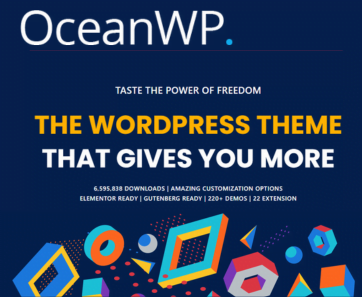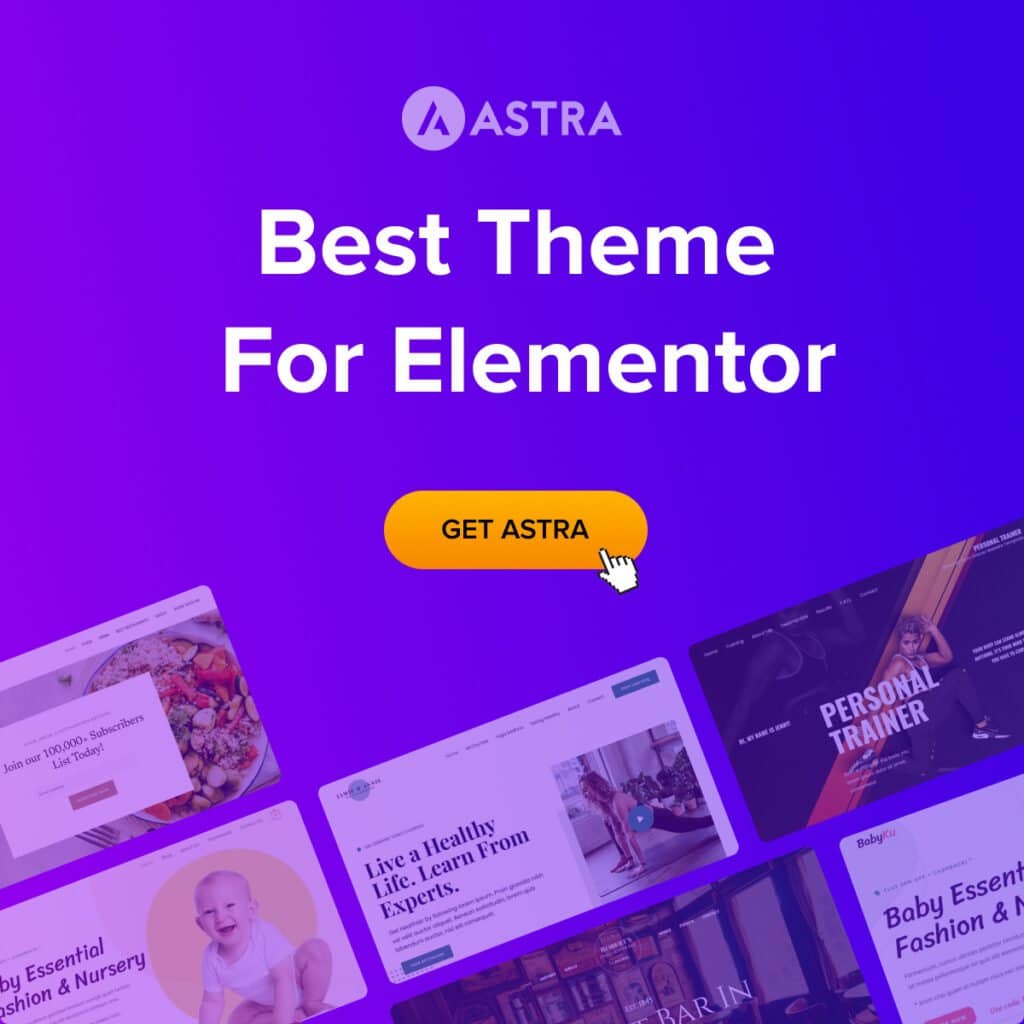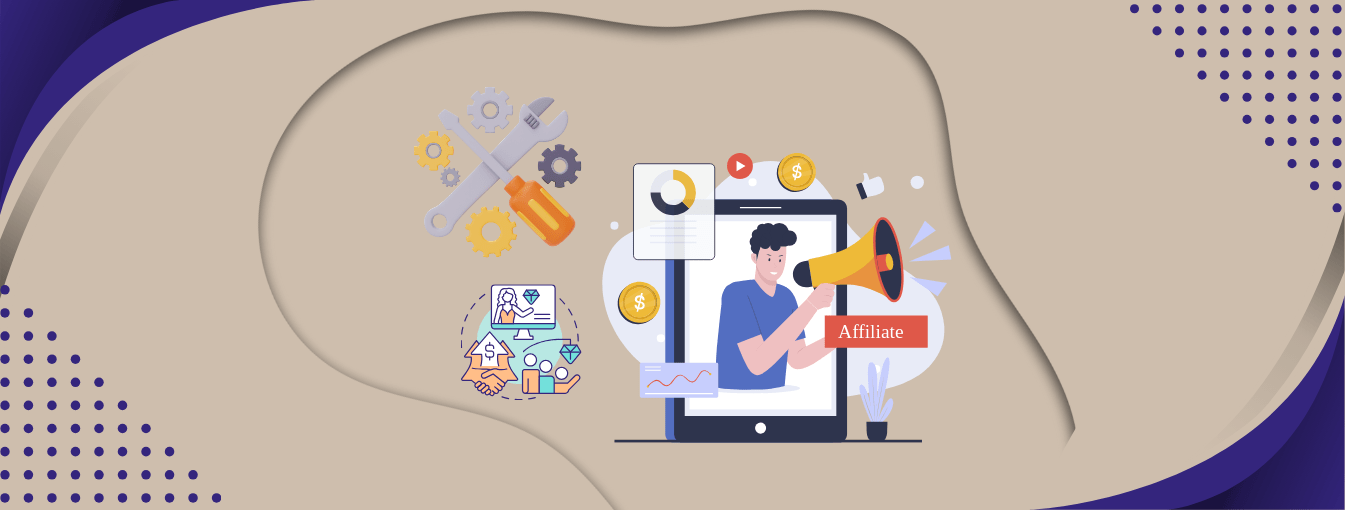55 min read

Content marketing packages are offerings provided by content marketing agencies or freelance content creators to help businesses create, distribute, and manage their content effectively. These packages are designed to cater to the varying needs and budgets of businesses looking to improve their online presence, engage with their target audience, and drive traffic and conversions.
The Entire Article at-a- Glance
15 significant steps, at-a-glance, to Use Content Marketing Packages to Grow Your Business:
- Step 1: Define Your Goals: Determine clear and specific objectives for your content marketing efforts, such as increasing website traffic, generating leads, or boosting brand awareness.
- Step 2: Understand Your Audience: Research and identify your target audience’s demographics, interests, pain points, and preferences to tailor your content accordingly.
- Step 3: Choose the Right Content Marketing Package: Select a content marketing package that aligns with your budget, resources, and goals. Packages may include content creation, distribution, and analytics services.
- Step 4: Develop a Content Strategy: Create a comprehensive content strategy that outlines your topics, formats (e.g., blog posts, videos, infographics), and publishing schedule.
- Step 5: High-quality Content Creation: Produce high-quality, relevant, and valuable content that addresses your audience’s needs and concerns. Ensure consistency in voice and tone.
- Step 6: SEO Optimization: Implement SEO best practices to optimize your content for search engines. Use relevant keywords, meta descriptions, and header tags.
- Step 7: Content Promotion and Distribution: Utilize various channels like social media, email marketing, and guest posting to promote your content and reach a wider audience.
- Step 8: Lead Generation: Incorporate lead magnets, such as ebooks, webinars, or newsletters, to capture visitor information and build your email list.
- Step 9: Analyze and Iterate: Monitor content performance using analytics tools. Adjust your strategy based on what works best and what needs improvement.
- Step 10: Build Authority and Trust: Establish your brand as an industry authority by consistently delivering valuable content. Engage with your audience through comments and social media interactions.
- Step 11: Measure ROI: Track the return on investment (ROI) of your content marketing efforts by assessing metrics like conversion rates, traffic growth, and revenue generated.
- Step 12: Adapt and Evolve: Stay updated with industry trends and adjust your content marketing strategy accordingly to remain relevant and competitive.
- Step 13: Collaborate and Outsource: Consider partnering with influencers or outsourcing specific content tasks to experts if it aligns with your strategy and budget.
- Step 14: Stay Compliant: Adhere to relevant legal and ethical guidelines, such as GDPR for data protection and disclosure rules for sponsored content.
- Step 15: Long-Term Commitment: Understand that content marketing is a long-term strategy. Consistency and persistence are key to achieving sustainable business growth.
By using content marketing packages strategically and consistently, you can effectively grow your business, build brand authority, and connect with your target audience in a meaningful way. Remember that content marketing is an evolving process, so stay up-to-date with industry trends and continuously refine your approach for the best results.
Now, you are most welcome to explore these steps in detail in the following sections. Let’s start our journey…
Introduction
Businesses are continuously looking for innovative strategies to establish their online presence and promote sustainable growth in the ever-changing world of digital marketing. The use of content marketing packages is one such tactic that has become more popular. These packages are comprehensive bundles of content creation, distribution, and marketing services designed to empower businesses in their quest for visibility and profitability.
It’s essential to understand what these packages include before delving into the complexities of employing content marketing packages to drive the growth of your business. A comprehensive approach to content production, promotion, and administration is provided by content marketing packages, which are a collection of services provided by professional marketing agencies or content specialists. These packages are created specifically to meet the individual requirements of businesses in a variety of sectors, offering a one-stop shop for producing compelling content that captivates audiences and produces the necessary results.
The significance of content marketing in the contemporary business landscape cannot be overstated. It has emerged as a potent catalyst for business growth and brand development. Content marketing transcends the traditional methods of advertising by focusing on creating valuable, informative, and entertaining content that resonates with target audiences. By doing so, it fosters stronger connections with customers, establishes authority within the industry, and ultimately drives revenue and growth.
In this comprehensive guide, we’ll delve deep into the realm of content marketing packages and how they can be harnessed to propel your business to new heights. We’ll navigate through every essential aspect of this dynamic strategy, from setting crystal-clear business goals and understanding your audience to creating compelling content and measuring your return on investment (ROI). By the end of this journey, you’ll be armed with the knowledge and insights needed to not only embrace content marketing packages but to use them as a powerful catalyst for business growth.
So, whether you’re a seasoned marketer looking to revitalize your strategy or a business owner eager to unlock the potential of content marketing, fasten your seatbelt and get ready to explore how content marketing packages can become your business’s secret weapon for success.
Understanding Content Marketing Packages
Once you’ve grasped the importance of content marketing in business growth, the next step is to gain a comprehensive understanding of the content marketing packages themselves. This section will break down the key components, types of content included, and numerous benefits that these packages offer.

What are Content Marketing Packages?
Content Marketing Packages are structured service bundles provided by marketing agencies or specialists. They comprise a diverse set of components and strategies aimed at creating, distributing, and managing content effectively.
Components commonly found in Content Marketing Packages may include content creation, blog posts, articles, social media posts, videos, infographics, email marketing campaigns, SEO optimization, and analytics.
Types of Content Included
Content marketing packages encompass various types of content to cater to different audience preferences and marketing goals. These may consist of:
- Written Content: Blogs, articles, eBooks, whitepapers, press releases, and website copy.
- Visual Content: Infographics, images, videos, and presentations.
- Social Media Content: Posts, stories, and updates on platforms like Facebook, Twitter, Instagram, and LinkedIn.
- Email Marketing Content: Newsletters, promotional emails, and personalized communication.
- Interactive Content: Quizzes, polls, surveys, and interactive tools.
- Podcasts: Audio content for reaching auditory audiences.
- Webinars: Live or recorded sessions for in-depth engagement.
- SEO Content: Keyword-optimized content to enhance search engine visibility.
- Case Studies: Real-life examples showcasing your business’s success stories.
Benefits of Using Content Marketing Packages
Content Marketing Packages offer a plethora of advantages for businesses seeking to expand their online presence and achieve sustainable growth. Here are some key benefits:
Cost-Efficiency:
Content Marketing Packages often provide a cost-effective alternative to hiring in-house content teams or individual specialists. Bundling services can result in significant cost savings while maintaining quality.
Time-Saving:
Outsourcing content marketing to experts allows you to focus on core business activities. It frees up valuable time and resources that can be channeled into other essential aspects of your business.
Expertise and Quality:
Content marketing agencies or specialists bring a wealth of experience and expertise to the table. They have a deep understanding of industry trends, audience preferences, and effective content strategies, ensuring high-quality content production.
Consistency in Messaging:
Maintaining a consistent brand voice and message across all content channels is crucial for building trust and recognition. Content Marketing Packages enable businesses to uphold this consistency, as professionals ensure that messaging aligns with the brand’s identity and values.
By comprehending the core elements and benefits of Content Marketing Packages, you’ll be better equipped to make informed decisions when selecting the right package for your business and harnessing its potential for growth.
Setting Your Business Goals with Content Marketing Packages
Defining Clear Objectives
In the world of content marketing packages, success begins with a clear and well-defined set of objectives. Without a target, it’s like setting sail without a destination. Let’s break down some of the primary objectives that content marketing packages can help you achieve:
- Increasing Website Traffic: One of the fundamental goals of content marketing is to attract more visitors to your website. Content marketing packages can focus on creating content that ranks well in search engines, grabs the attention of your target audience, and drives a steady flow of organic traffic to your site.
- Generating Leads: Content can be a lead-generation powerhouse when used strategically. Content marketing packages can help you create valuable resources like ebooks, webinars, or whitepapers that entice visitors to provide their contact information, turning them into leads for your sales funnel.
- Boosting Brand Awareness: Content isn’t just about conversions; it’s also about building brand recognition and trust. With the right content marketing package, you can craft engaging content that not only informs and entertains but also elevates your brand’s visibility and authority in your industry.

Aligning Goals with Content Marketing Strategies
Once you’ve defined your objectives, the next crucial step is aligning them with your chosen content marketing strategies. Here’s where the magic happens as you map out a clear roadmap for how content marketing packages will help you reach your goals:
- Increasing Website Traffic: If your primary objective is to boost website traffic, content marketing packages may include a focus on SEO optimization, regular blog post publication, and social media promotion. The goal is to attract more visitors to your site through informative and relevant content.
- Generating Leads: For lead generation, content marketing packages can include the creation of compelling lead magnets like ebooks or webinars. These packages will also involve setting up landing pages, email marketing campaigns, and tracking tools to capture and nurture leads effectively.
- Boosting Brand Awareness: If brand awareness is your target, content marketing packages will emphasize creating shareable content, engaging with your audience on social media, and potentially collaborating with influencers or industry leaders. These strategies aim to increase your brand’s presence and authority in your niche.
Setting clear objectives and aligning them with the right content marketing strategies within your chosen content marketing package is essential. It ensures that your efforts are purposeful, measurable, and directed toward achieving tangible business growth. As we continue on this content marketing journey, you’ll learn how to execute these strategies effectively, step by step.
Understanding Your Audience: The Foundation of Content Marketing Packages
Conducting Audience Research
Before diving headfirst into content creation, it’s imperative to have a deep understanding of your target audience. Effective content marketing packages start with robust audience research, which includes:
- Demographics: Get a clear picture of who your audience is. This involves gathering data on age, gender, location, income levels, education, and any other relevant demographic factors. This information helps tailor your content to specific segments of your audience.
- Interests and Pain Points: Explore the interests, desires, and pain points of your audience. What challenges do they face, and how can your content provide solutions or insights? Knowing what keeps your audience up at night will guide your content creation.
- Content Preferences: Different segments of your audience may prefer consuming content in various formats. Some might love in-depth articles, while others prefer videos or infographics. Understanding these preferences allows you to create content that resonates.

Creating Audience Personas
To humanize your audience research and make it actionable, consider creating audience personas. These are detailed, semi-fictional representations of your ideal customers based on your research. Here’s how to do it:
- Give Them a Name and Face: Assign a name and even a stock photo to your persona. This makes them feel more real and relatable.
- Demographic Details: Include demographic information like age, gender, location, job title, and income.
- Goals and Pain Points: What are their primary goals or aspirations? What challenges or pain points are they trying to overcome?
- Behavioral Insights: Understand their online behavior, such as the websites they visit, the social media platforms they use, and their preferred communication channels.
- Content Preferences: Specify their content preferences, such as whether they like to read blogs, watch videos, or listen to podcasts.
- Buying Behavior: If applicable, detail their buying behavior, including factors that influence their purchasing decisions.
Creating audience personas ensures that everyone involved in your content marketing packages, from writers to designers and marketers, has a clear understanding of who they are trying to reach. This not only improves the effectiveness of your content but also enables you to tailor it to the specific needs and interests of different segments within your audience.
By understanding your audience and creating detailed personas, you’re laying a strong foundation for content marketing success. Your content marketing packages will be finely tuned to resonate with the people you want to reach, increasing the likelihood of engagement and conversion. Next, we’ll explore how to choose the right content marketing package to align with your goals and audience insights.
Choosing the Right Content Marketing Package
Choosing the right content marketing package for your business is a crucial decision, as it can significantly impact your online presence, brand awareness, and overall marketing success.
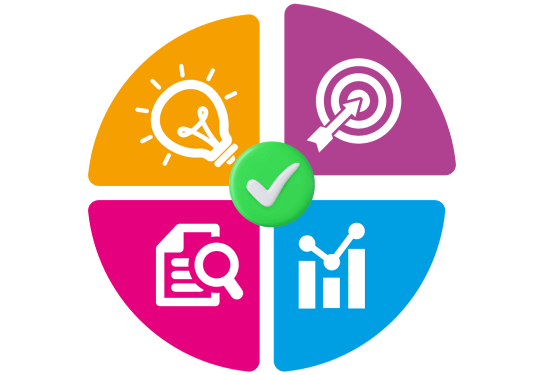
Some Steps to Help You Make an Informed Choice
- Define Your Goals:
Start by clarifying your content marketing objectives. What do you want to achieve? Common goals include increasing website traffic, generating leads, boosting brand awareness, and establishing thought leadership.
- Know Your Audience:
Understand your target audience’s preferences, needs, and pain points. Effective content marketing should resonate with your audience and provide value to them.
- Assess Your Resources:
Evaluate your available resources, including budget, time, and in-house expertise. Your resources will influence the type and scale of content marketing packages you can pursue.
- Research Providers:
Look for reputable content marketing agencies or freelancers with a proven track record. Read reviews, request referrals, and compare the services offered by different providers.
- Determine Content Types:
Decide on the types of content that align with your goals and audience. This may include blog posts, videos, infographics, eBooks, podcasts, or social media content.
- Content Strategy:
A good content marketing package should include a well-defined strategy tailored to your business. This strategy should outline content topics, publishing schedules, promotion methods, and key performance indicators (KPIs).
- SEO Integration:
Ensure that the content marketing package includes search engine optimization (SEO) practices. This will help your content rank higher in search results, driving organic traffic.
- Quality vs. Quantity:
Balance the quality and quantity of content. High-quality, relevant content is more valuable than churning out large volumes of content that don’t resonate with your audience.
- Analytics and Reporting:
Choose a package that includes regular performance tracking and reporting. You should be able to measure the impact of your content marketing efforts against your established KPIs.
- Scalability:
Consider whether the chosen package can be scaled up or down as your business grows or changes. Flexibility is essential to adapt to evolving needs.
- Budget Considerations:
Budget is a critical factor in choosing the right content marketing package. The costs associated with content marketing can vary widely, depending on factors like the complexity of your industry, the quality of content you require, and the scale of your campaigns. Consider these budget-related points:
Set a Realistic Budget: Determine how much you can allocate to content marketing. Keep in mind that content marketing is an investment, and it often takes time to see substantial returns.
Compare Packages: Different service providers offer content marketing packages at varying price points. Compare the services included and their pricing to find a package that aligns with your budget and objectives.
Balance Quality and Quantity: It’s essential to strike a balance between the quality and quantity of content. Producing high-quality content consistently may require a more significant investment, but it can yield better results in the long run.
- Client References:
Ask potential providers for references from past clients. This will give you insights into their ability to deliver on their promises.
- Contract Terms:
Review the terms of the contract carefully, including the duration, termination clauses, and any additional costs or hidden fees.
- Communication:
Effective communication with your content marketing provider is vital. Ensure there is a clear line of communication and expectations regarding updates, feedback, and revisions.
- Testimonials and Case Studies:
Look for testimonials and case studies showcasing successful outcomes from previous clients to gauge the provider’s effectiveness.
- Trial Period:
If possible, start with a trial period or a smaller project to assess the provider’s capabilities and fit for your business.
Remember that content marketing is a long-term strategy, and it may take some time to see significant results. Choosing the right package that aligns with your goals and resources is essential for a successful content marketing campaign.
Types of Content Marketing Packages
Content marketing packages can vary widely depending on your specific needs, goals, and budget. Here are some common types of content marketing packages offered by agencies, freelancers, and marketing companies:
- Blogging Packages:
These packages focus on creating and maintaining a blog for your website. They typically include content strategy development, keyword research, writing, editing, and publishing blog posts on a regular basis.
- Social Media Management Packages:
These packages focus on managing your social media presence. Services may include content creation, scheduling, engagement, and performance tracking across various social platforms.
- SEO-Driven Packages:
These packages emphasize search engine optimization. They involve optimizing existing content and creating new content with a focus on keywords and ranking improvement.
- Video Content Packages:
Video marketing packages revolve around creating video content for your brand. This can include video production, editing, and distribution on platforms like YouTube or social media.
- Email Marketing Packages:
These packages center on email marketing campaigns. They include designing email templates, creating content, segmenting your email list, and measuring campaign performance.
- Content Strategy Packages:
Content strategy packages are more comprehensive and involve developing a customized content marketing strategy for your business. They often include market research, competitor analysis, and content planning.
- Influencer Marketing Packages:
If you’re interested in leveraging influencers, these packages connect you with relevant influencers to promote your products or services through their content.
- Content Distribution Packages:
These packages focus on distributing your content effectively to reach a broader audience. They may include outreach, guest posting, and partnerships with other websites.
- Content Audit Packages:
Content audit packages involve reviewing and optimizing your existing content. They identify gaps, update outdated content, and improve overall content quality.
- Content Creation Packages:
These packages focus solely on content creation, which may include articles, blog posts, infographics, eBooks, whitepapers, and more.
- Lead Generation Packages:
These packages are designed to generate leads through content. They often include creating lead magnets like eBooks or webinars and implementing lead capture strategies.
- Analytics and Reporting Packages:
These packages focus on tracking and analyzing content performance. They include regular reporting and insights to help you make data-driven decisions.
- Custom Packages:
Many agencies offer custom content marketing packages tailored to your specific needs. You can select individual services and build a package that suits your goals.
When choosing a content marketing package, it’s essential to consider your business objectives, target audience, and available resources. You can also discuss your goals with potential providers to find a package that aligns with your unique requirements and budget. Additionally, remember that successful content marketing often involves a combination of multiple package types to create a well-rounded strategy.
Matching Packages with Business Needs
The key to success is matching the right content marketing package with your business needs. Here’s how to do it:
- Assess Your Goals:
Revisit the objectives you defined in the earlier stage of goal setting. Are you primarily looking to increase traffic, generate leads, or boost brand awareness? The type of package you choose should align with these goals.
- Evaluate Resources:
Consider your internal resources and capabilities. Do you have an in-house content team, or do you need external support? Your choice of a content marketing package should complement your existing resources.
- Long-Term Strategy:
Think about your long-term content marketing strategy. Are you planning for a short-term campaign, or do you want a sustainable, ongoing content strategy? The duration and commitment of your chosen package should reflect your strategy.
By carefully selecting the right content marketing package that aligns with your budget, goals, and business needs, you set the stage for effective content marketing. In the next section, we’ll delve into the process of developing a content strategy, which is essential for making the most of your chosen package.
Developing a Content Strategy with Content Marketing Packages
Creating a Comprehensive Content Plan
Creating a successful content marketing strategy is akin to building a house; it starts with a well-thought-out blueprint. Your content marketing package should be executed within the framework of a comprehensive content plan, which consists of several crucial elements:
- Content Topics and Themes: Begin by identifying the topics and themes that align with your business goals and resonate with your target audience. These topics should be relevant to your industry, products, or services and should address the pain points and interests of your audience.
- Content Formats (Blogs, Videos, Infographics, etc.): Your content plan should specify the formats you’ll use to convey your message. This might include blog posts, videos, infographics, podcasts, webinars, and more. Each format has its strengths, and your choice should cater to your audience’s preferences.
- Publishing Schedule: Consistency is paramount in content marketing. Your content plan should outline a publishing schedule that dictates when and how often you’ll release new content. Whether it’s daily, weekly, or monthly, a regular schedule keeps your audience engaged and returns for more.
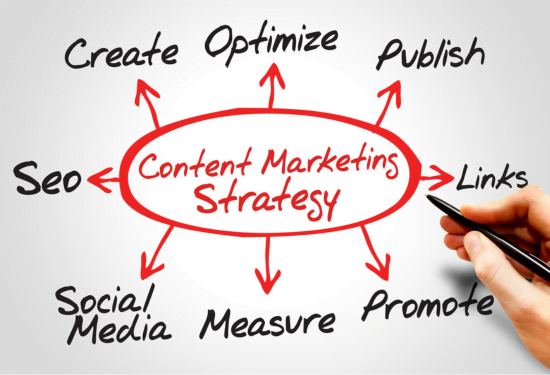
Maintaining Consistency in Voice and Tone
In the realm of content marketing, your brand’s voice and tone are like the personality that your audience comes to know and trust. Maintaining consistency in these aspects is essential:
- Brand Voice: Define your brand’s unique voice—whether it’s authoritative, friendly, conversational, or formal. This voice should reflect your brand’s values and resonate with your audience. Consistency in voice helps create a coherent and recognizable brand identity.
- Tone: While your voice remains consistent, the tone may vary depending on the content’s nature. For example, your tone may be more empathetic and understanding in customer support content and more enthusiastic and inspirational in promotional content. Adapt your tone while staying true to your voice.
- Style Guide: Consider creating a style guide that outlines your brand’s preferred language usage, grammar rules, and formatting guidelines. A style guide ensures that everyone involved in content creation, whether in-house or external writers, adheres to the same standards.
- Audience Alignment: Always keep your audience in mind when crafting content. Ensure that your voice and tone resonate with them and align with their preferences. Understanding your audience, as discussed in a previous section, is crucial in maintaining this alignment.
By creating a comprehensive content plan and maintaining consistency in voice and tone, your content marketing efforts will be more effective and cohesive. Your chosen content marketing package will be executed with purpose, ensuring that each piece of content aligns with your overall strategy. Next, we’ll explore how to craft high-quality content that engages your audience and fulfills your business goals.
Crafting High-Quality Content
Creating high-quality content is the heart and soul of successful content marketing packages. It’s not just about quantity; it’s about delivering value that resonates with your audience. Here’s how to craft content that stands out:
Content Creation Best Practices
- Addressing Audience Needs: The foundation of high-quality content is its ability to address the needs and questions of your target audience. Before crafting any piece of content, ask yourself: “What problem does this solve for my audience? How does it provide value?” Ensure that your content is genuinely helpful or informative.
- Research and Data-Driven Content: Back your content with data and research. Whether you’re writing a blog post, creating a video, or designing an infographic, your content should be well-researched and factually accurate. Cite authoritative sources and use data to support your claims. Data-driven content is not only more trustworthy but also more engaging.
- Storytelling Techniques: Storytelling is a powerful way to connect with your audience on an emotional level. Weave narratives into your content to make it relatable and memorable. Stories humanize your brand and can help convey complex information in a compelling way. Whether it’s a customer success story or the journey of your business, storytelling adds depth to your content.

Addressing Audience Needs
Content marketing is about providing solutions, insights, and entertainment to your audience. Here’s how to do it effectively:
- Problem-Solving: Identify common challenges or pain points your audience faces and create content that offers practical solutions. How-to guides, tutorials, and troubleshooting articles are great examples.
- Educational Content: Position yourself as an industry authority by sharing your knowledge. Educational content, such as explainer videos or in-depth articles, can help your audience understand complex topics.
- Entertainment and Engagement: Not all content needs to be serious. Entertaining content, like humorous videos or interactive quizzes, can engage your audience and keep them coming back for more.
Research and Data-Driven Content
- Thorough Research: Take the time to research your chosen topic thoroughly. This includes understanding the latest trends, exploring different perspectives, and staying up-to-date with industry news.
- Data Analysis: Use data and analytics tools to gather insights about your audience’s preferences and behaviors. This data can inform your content strategy and help you create content that resonates with your audience.
- Visualizing Data: Consider using visual elements like charts, graphs, and infographics to present data in a more engaging and understandable way. Visual content tends to perform well in content marketing.
Storytelling Techniques
- Character Development: If your content involves stories, develop relatable characters that your audience can empathize with. This makes your narrative more engaging and memorable.
- Conflict and Resolution: Every good story has conflict and resolution. Highlight the challenges your audience faces and show how your product or service can help resolve them.
- Emotional Appeal: Use emotions to connect with your audience. Whether it’s through personal anecdotes or evocative language, tapping into emotions can create a strong bond with your readers or viewers.
Remember, high-quality content is not a one-time effort but an ongoing commitment. Your content marketing package should support the consistent creation of valuable and engaging content. In the next section, we’ll explore how to optimize your content for search engines through SEO techniques, further enhancing its impact.
SEO Optimization
Implement SEO Best Practices to Optimize Your Content for Search Engines

Keyword Research:
Keyword research is the foundation of effective SEO. Identify relevant keywords and phrases that your target audience is likely to use when searching for information related to your industry or offerings. Tools like Google Keyword Planner, SEMrush, or Ahrefs can assist in this process.
- Long-Tail Keywords: Consider using long-tail keywords, which are longer and more specific phrases. They often have less competition and can attract highly targeted traffic.
- Competitor Analysis: Analyze the keywords your competitors are ranking for. This can provide valuable insights into potential keywords to target.
On-Page SEO Elements:
Once you’ve identified your target keywords, it’s essential to incorporate them strategically into your content. Here are some on-page SEO elements to consider:
- Title Tags: Optimize your page or post titles with the primary keyword. Make sure the title is compelling and provides a clear idea of what the content is about.
- Meta Descriptions: Craft engaging meta descriptions that include relevant keywords. These descriptions appear in search results and can influence click-through rates.
- Header Tags (H1, H2, H3, etc.): Use header tags to structure your content. The H1 tag should contain your main keyword and represent the primary topic, while H2 and H3 tags can organize subtopics.
- Keyword Placement: Naturally integrate keywords throughout your content, including in the introduction, subheadings, body text, and conclusion. Avoid keyword stuffing, as it can negatively impact user experience and search rankings.
- Internal and External Links: Include relevant internal links to other pages on your website and external links to authoritative sources. This enhances the user experience and signals to search engines that your content is well-researched.
- Image Optimization: If your content includes images, optimize them by adding descriptive alt text and compressing them for faster loading times.
- Mobile Optimization: Ensure your content is mobile-friendly, as Google prioritizes mobile-first indexing. Responsive design and fast loading on mobile devices are crucial.
Effective SEO optimization helps your content rank higher in search engine results pages (SERPs), making it more likely to be discovered by your target audience. As you integrate SEO practices into your content marketing packages, you’ll not only drive organic traffic to your website but also improve the overall user experience. In the next section, we’ll explore how to promote and distribute your content to maximize its reach and impact.
Content Promotion and Distribution
Creating valuable content is just one part of the equation; the other is ensuring that your target audience sees it. Content promotion and distribution are vital aspects of content marketing packages. Here’s how to effectively get your content in front of your audience:
Leveraging Various Marketing Channels
Social Media:
Social media platforms are powerful tools for content promotion. Share your content on platforms like Facebook, Twitter, LinkedIn, Instagram, and any others relevant to your audience. Use engaging captions and visuals to capture attention. Consider using social media management tools to schedule posts for consistency.
- Engagement: Engage with your audience by responding to comments, asking questions, and conducting polls or surveys. Encourage sharing by making your content shareable and easy to repost.
Email Marketing:
Email is a direct and personal way to reach your audience. Send email newsletters that highlight your latest content. Segment your email list to tailor content to specific audience segments. Include compelling subject lines and preview text to entice recipients to open your emails.
- Automation: Use email marketing automation to send personalized content recommendations based on user behavior and interests.
Guest Posting:
Collaborate with industry-related websites and blogs to publish guest posts. This not only extends your reach to new audiences but also builds backlinks to your site, which can improve your SEO.

Utilizing Paid Advertising if Applicable
Sometimes, organic reach may not be enough, especially when you’re looking for rapid exposure or targeting a specific audience. In such cases, consider paid advertising:
- Search Engine Advertising: Use platforms like Google Ads to create targeted ads that appear in search engine results when users search for specific keywords related to your content.
- Social Media Advertising: Platforms like Facebook Ads, Instagram Ads, and LinkedIn Ads offer robust targeting options to reach specific demographics and interests.
- Native Advertising: Invest in native advertising, where your content appears as sponsored or promoted content within relevant publications or websites.
- Display Advertising: Display ads can be effective for branding and driving traffic to your content. Consider banner ads on industry-related websites or within relevant forums.
Effective content promotion and distribution ensure that your content marketing efforts don’t go unnoticed. Your content marketing package should include strategies for sharing your content across various channels to reach a broader and more engaged audience. In the next section, we’ll explore how to use content marketing to generate leads and capture valuable customer information.
Lead Generation with Content Marketing Packages
Lead generation is a critical component of content marketing packages, as it enables you to capture valuable customer information and build relationships with potential customers. Here’s how to effectively generate leads through your content marketing efforts:
Creating Compelling Lead Magnets
- Ebooks: Ebooks are comprehensive, downloadable resources that provide in-depth information on a specific topic. To create a compelling ebook, focus on a topic that aligns with your audience’s interests and pain points. Ensure that the content is well-researched, organized, and valuable. In exchange for access to the ebook, ask users to provide their contact information, such as their name and email address.
- Webinars: Webinars are live or pre-recorded online seminars or workshops. They are an excellent way to engage with your audience in real-time and position yourself as an industry expert. Promote webinars through your content and social media channels, and require attendees to register with their email addresses to participate.
- Newsletters: A newsletter is an ongoing email communication that provides subscribers with updates, valuable content, and offers. Encourage website visitors to subscribe to your newsletter to receive regular updates and exclusive content. Newsletters can help nurture leads over time and keep your brand top-of-mind.
Capturing and Nurturing Leads
- Capture Leads with Forms: Use lead capture forms strategically throughout your website and within your content. These forms should collect essential contact information, but keep them concise to avoid overwhelming potential leads.
- Segment Your Leads: Not all leads are the same. Segment your leads based on their interests, behavior, and demographics. This allows you to send targeted and relevant content to each segment, increasing the chances of conversion.
- Lead-Nurturing Email Campaigns: Develop automated email sequences to nurture leads over time. Provide valuable content, address common questions, and gradually introduce your products or services. Personalize your emails to enhance engagement.
- Provide Value: Continuously provide value to your leads. Offer them exclusive content, discounts, or access to webinars or events. The more value you provide, the more likely leads are to become paying customers.
- CRM Systems: Utilize Customer Relationship Management (CRM) systems to manage and track leads. CRM tools help you organize lead data, schedule follow-ups, and monitor lead interactions with your content.
Lead generation is a crucial step in the content marketing funnel. It allows you to capture potential customers’ information, nurture their interest, and guide them toward becoming paying customers. Integrating lead generation strategies into your content marketing package ensures that your efforts result in a growing and engaged customer base. Next, we’ll explore how to measure the success of your content marketing efforts through analytics and reporting.
Analyze and Iterate
Effective content marketing doesn’t end with content creation and distribution—it requires continuous analysis, learning, and improvement. The “Analyze and Iterate” phase is essential to ensure your content marketing packages are delivering the desired results and adapting to changing circumstances. Here’s how to approach it:
- Define Key Metrics: Start by defining the key performance indicators (KPIs) that align with your content marketing goals. Common metrics include website traffic, conversion rates, engagement metrics (likes, shares, comments), email open and click-through rates, and lead generation numbers.
- Implement Analytics Tools: Utilize analytics tools like Google Analytics, social media insights, and email marketing platforms to track and measure your chosen KPIs. These tools provide valuable data on how your content is performing and where improvements may be needed.
- Regularly Review Data: Set a schedule for reviewing your data and metrics. This could be weekly, monthly, or quarterly, depending on your content marketing package’s scale and goals. Analyze the data to identify trends, successes, and areas for improvement.
- Identify High-Performing Content: Identify which pieces of content are performing exceptionally well. Look for patterns in the content type, topic, format, or distribution channel that resonate most with your audience.
- Identify Weak Points: Also, identify content that isn’t performing as expected. Assess why these pieces are underperforming. Is it the content itself, the promotion strategy, or perhaps an issue with targeting the wrong audience?
- Collect Audience Feedback: Actively seek feedback from your audience through surveys, comments, and social media interactions. Understanding their preferences and concerns can help you fine-tune your content marketing strategies.
- Experimentation and A/B Testing: Don’t be afraid to experiment with different content approaches. Conduct A/B tests to compare variations of content or distribution strategies to see which performs better. This iterative process helps you refine your content marketing tactics.
- Adapt and Adjust: Based on your analysis, make adjustments to your content marketing strategies. This might involve tweaking content topics, refining distribution channels, or altering your publishing schedule. Be agile and willing to adapt to changing circumstances and audience preferences.
- Set New Goals: As you make improvements and see progress, set new goals for your content marketing packages. These goals should build upon your initial objectives and reflect your evolving business needs.
- Document Insights: Maintain a record of your insights, findings, and changes made. This documentation serves as a valuable resource for future content marketing efforts, ensuring you build on what works and avoid repeating mistakes.
The “Analyze and Iterate” phase is an ongoing process that ensures your content marketing remains effective and relevant. By consistently assessing your content’s performance and making data-driven adjustments, your content marketing packages will continue to drive growth and achieve your business objectives. In the final section, we’ll emphasize the importance of a long-term commitment to content marketing for sustained success.
Building Authority and Trust
Building authority and trust is a cornerstone of effective content marketing. It not only helps establish your brand as a credible source within your industry but also fosters deeper connections with your audience. Here’s how to achieve this:
Establishing Brand as an Industry Authority
- Expert Content: Create content that demonstrates your expertise and thought leadership within your industry. Share insights, research findings, and unique perspectives that showcase your brand’s deep understanding of relevant topics.
- Consistent and Quality Content: Consistency in delivering high-quality content is key to building authority. Regularly publish content that educates, informs, and adds value to your audience’s lives. Over time, this consistency reinforces your brand’s credibility.
- Original Research: Conduct original research or surveys within your industry. Sharing unique data and insights not only positions your brand as an authority but also attracts attention and backlinks from other industry players.
- Guest Contributions: Contribute guest posts and articles to reputable industry publications. Being featured on authoritative platforms can boost your brand’s credibility and reach a broader audience.
Engaging with Your Audience
- Responding to Comments: Encourage discussions and engagement by actively responding to comments on your blog posts and social media. Address questions, provide clarifications, and acknowledge feedback, whether positive or negative.
- Social Media Interactions: Use social media platforms as a means to engage with your audience authentically. Respond promptly to messages, mentions, and comments. Share user-generated content and customer testimonials to showcase trustworthiness.
- Webinars and Q&A Sessions: Host webinars, live streams, or Q&A sessions to directly interact with your audience. These events allow you to address their concerns, share expertise, and build trust through real-time communication.
- Transparency: Be transparent about your brand’s operations, values, and processes. Authenticity and openness can instill trust and loyalty in your audience.
- Consistent Brand Voice: Maintain a consistent brand voice and tone across all communication channels. This consistency reinforces your brand identity and helps build trust over time.
- Customer Testimonials and Case Studies: Showcase customer testimonials and case studies to highlight real-world examples of your brand delivering value. These stories provide social proof of your trustworthiness.
Building authority and trust takes time and dedication, but it’s a crucial aspect of content marketing. As your brand becomes a recognized authority in your industry and engages with your audience in meaningful ways, you’ll see the long-term benefits of increased credibility, customer loyalty, and sustained business growth.
Measuring Content Marketing ROI
Measuring the return on investment (ROI) of your content marketing efforts is essential to evaluate the effectiveness of your strategy and allocate resources wisely. Content marketing ROI can be challenging to measure accurately because it often involves intangible benefits like brand awareness and customer engagement. However, here are some steps and key metrics to help you measure content marketing ROI effectively:
Define Your Goals:
Start by setting clear, specific, and measurable goals for your content marketing efforts. Common goals include increasing website traffic, generating leads, boosting brand awareness, and driving sales.
Track Key Performance Indicators (KPIs):
Identify the key performance indicators that align with your goals. Common content marketing KPIs include:
- Website traffic: Measure the number of visitors, page views, and unique visitors to your website.
- Conversion rate: Track how many visitors take desired actions like signing up for a newsletter, downloading a whitepaper, or making a purchase.
- Leads generated: Monitor the number of leads captured through forms or other contact methods.
- Social Engagement: Measure likes, shares, comments, and other social media interactions.
- Email open and Click-Through Rates: Assess the performance of email marketing campaigns.
- SEO Rankings: Monitor improvements in search engine rankings for targeted keywords.
Assign Values:
Assign a monetary value to each of your KPIs. This can be challenging, but it’s crucial for calculating ROI. For example, if you know the average value of a lead or the revenue generated from a single sale, you can assign values accordingly.
Calculate Costs:
Determine the total costs associated with your content marketing efforts, including content creation, distribution, and promotion, as well as tools and personnel expenses.
Measure Revenue and Profit:
Track the revenue generated from your content marketing efforts. For e-commerce businesses, this might be direct sales. For others, it could be customer lifetime value (CLV) or revenue generated from leads.
Calculating Return on Investment (ROI)
There are various formulas to calculate ROI, but a common one is:
ROI = (Final Value of Investment – Cost of Investment) / Cost of Investment x 100
A good investment will have a positive ROI. Better results come from higher numbers. However, a higher ROI number does not always indicate a better investment option. The ROI of various investments should be compared to other available alternatives.
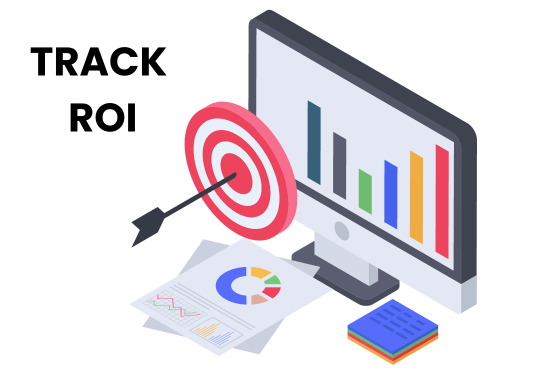
Attribution Modeling:
Attribution modeling helps you understand how different touchpoints and content pieces contribute to conversions. This can be important for allocating resources effectively.
Monitor Trends Over Time:
Continuously track your content marketing ROI over time to identify trends and make adjustments as needed. ROI can fluctuate based on changes in strategy, seasonality, and market conditions.
Benchmarking:
Compare your content marketing ROI with industry benchmarks to see how you stack up against competitors or similar businesses.

Analytics Tools for Tracking and Analysis
- Google Analytics: Google Analytics is a powerful and widely used tool for tracking website traffic, user behavior, and conversion data. Set up goal tracking to measure conversions and use UTM parameters to track the performance of specific marketing campaigns.
- Marketing Automation Platforms: If you’re using marketing automation platforms like HubSpot, Marketo, or Mailchimp, they often provide advanced analytics and reporting features. These platforms can help you track lead generation, email campaign performance, and more.
- Customer Relationship Management (CRM) Software: CRM systems like Salesforce and Zoho can be valuable for tracking lead conversion to customers and measuring the revenue generated from your content marketing efforts.
- Social Media Insights: Social media platforms offer built-in analytics tools to track engagement metrics, such as likes, shares, comments, and click-through rates. Use these insights to gauge the performance of your social media content.
- Email Marketing Analytics: Email marketing platforms like Mailchimp and Constant Contact provide detailed analytics on email open rates, click-through rates, and conversion rates. These metrics help assess the impact of your email campaigns.
- E-commerce Platforms: If you run an e-commerce business, platforms like Shopify, WooCommerce, or Magento offer built-in analytics to track product sales and revenue generated through your website.
Qualitative Feedback:
Don’t overlook qualitative feedback from customers and audience surveys. Customer testimonials, reviews, and social media comments can provide valuable insights into the impact of your content.
Measuring content marketing ROI is an ongoing process that requires a combination of quantitative data and qualitative insights. By consistently evaluating your efforts and adjusting your strategy based on the results, you can maximize the return on your content marketing investment.
Adapting and Evolving Your Content Marketing Strategy
In the ever-changing landscape of digital marketing, adaptability is key to maintaining the effectiveness of your content marketing packages. Here’s how to ensure your strategies remain current and responsive:
Staying Updated with Industry Trends
- Monitoring Industry News: Stay informed about developments and trends in your industry. Subscribe to industry-specific publications, follow thought leaders on social media, and join relevant forums or communities to keep up-to-date with the latest news and insights.
- Competitive Analysis: Regularly assess the content marketing strategies of your competitors. Identify what works well for them and consider incorporating successful tactics into your own strategy. Additionally, look for gaps or opportunities they may have missed.
- Attend Industry Events: Participate in industry conferences, webinars, and events. These gatherings provide opportunities to learn from experts, network with peers, and gain valuable insights into emerging trends.
- Keyword Research Updates: Keyword trends can change over time. Periodically revisit your keyword research to ensure that you are targeting the most relevant and high-impact keywords in your content.
The Importance of Iteration and Adjustment
- Regular Evaluation: Set a schedule for reviewing the performance of your content marketing efforts. Regular evaluation allows you to identify what’s working and what needs adjustment.
- A/B Testing: Continuously conduct A/B tests to compare different content variations, headlines, visuals, and distribution channels. This experimentation helps you fine-tune your content strategy based on real data.
- Feedback Loop: Maintain an open feedback loop with your audience. Encourage them to provide feedback on your content and ask for suggestions. This direct input can lead to valuable improvements.
- Data-Driven Decision-Making: Base your adjustments and iterations on data and analytics. If a particular type of content consistently performs well, consider creating more of it. Conversely, if certain strategies yield diminishing returns, pivot to alternatives.
- Technology Upgrades: Stay current with the latest marketing tools and technologies. New platforms or features may offer more efficient ways to execute your content marketing strategies.
- Team Training: Ensure that your content marketing team receives ongoing training and development. This helps them stay current with industry best practices and emerging technologies.
Adaptability and a willingness to evolve your content marketing strategies are crucial for long-term success. By staying updated with industry trends, regularly evaluating your efforts, and making data-driven adjustments, you can ensure that your content marketing packages remain effective and competitive in a dynamic digital landscape.
Collaborating and Outsourcing Content Marketing Tasks
Effective content marketing often involves collaboration and outsourcing to leverage expertise and resources. Here’s how to maximize the benefits of these strategies:
Partnering with Influencers
- Identify Relevant Influencers: Research and identify influencers in your industry or niche who have a substantial and engaged following. Look for individuals or brands whose values align with yours.
- Establish Authentic Relationships: Building genuine relationships with influencers is crucial. Engage with their content, leave thoughtful comments, and reach out with personalized messages expressing your interest in collaboration.
- Co-create Content: Collaborate with influencers to co-create content that resonates with their audience and aligns with your goals. This could involve influencer interviews, guest posts, or joint social media campaigns.
- Leverage Their Reach: Influencers can help expand your content’s reach by sharing it with their followers. This increases your content’s visibility and can drive more traffic and engagement.
- Disclosure and Transparency: Ensure that influencer collaborations are transparent. Both you and the influencer should clearly disclose any sponsored content or partnerships to maintain trust with the audience.
Outsourcing Content Creation or Distribution
- Identify Your Needs: Determine which aspects of content marketing can be effectively outsourced based on your team’s strengths and weaknesses. This could include content creation, graphic design, video production, or social media management.
- Select Qualified Professionals: When outsourcing, choose experienced professionals or agencies with a proven track record in content marketing. Check their portfolios and references to ensure they can meet your specific needs.
- Establish Clear Guidelines: Clearly communicate your brand’s voice, tone, and content guidelines to outsourced professionals. Provide a style guide and examples to maintain consistency.
- Quality Control: Implement quality control measures to review outsourced content before publication. This ensures that it aligns with your brand’s standards and objectives.
- Regular Communication: Maintain open communication with outsourced team members or agencies. Regular updates and feedback sessions help keep everyone on the same page and address any issues promptly.
- Cost-Benefit Analysis: Evaluate the cost-benefit of outsourcing tasks. Sometimes, the efficiency and expertise gained through outsourcing can outweigh the costs.
- Legal Considerations: Be aware of legal considerations when outsourcing, especially regarding content rights, intellectual property, and contractual agreements.
Collaborating with influencers and outsourcing tasks can enhance the effectiveness and scalability of your content marketing packages. When done strategically and in alignment with your brand’s values, these approaches can help you reach a wider audience and maintain high-quality content production and distribution.
Staying Compliant: Legal and Ethical Considerations
Content marketing packages must adhere to legal and ethical standards to maintain trust with your audience and avoid potential legal issues. Here are two critical aspects to consider:
GDPR Compliance for Data Protection
- Understand GDPR: Familiarize yourself with the General Data Protection Regulation (GDPR), especially if you collect and process personal data from individuals in the European Union (EU). GDPR outlines strict rules for data protection and privacy.
- Consent for Data Collection: Ensure that you have proper consent mechanisms in place for data collection. This includes clear and easy-to-understand consent forms and the option for users to opt in or out.
- Data Security: Implement robust data security measures to protect the personal information you collect. Regularly update and audit your security protocols to stay compliant with GDPR requirements.
- Data Handling Practices: Document your data handling practices, including how you store, process, and use collected data. Ensure that your practices align with GDPR guidelines, and be prepared to provide users with their data upon request.
Disclosure Rules for Sponsored Content
- Transparency in Sponsored Content: When you engage in influencer collaborations or sponsored content partnerships, adhere to disclosure rules and guidelines. Clearly label sponsored content as such, using phrases like “Paid Partnership” or “Sponsored Post.”
- FTC Guidelines: Familiarize yourself with the Federal Trade Commission (FTC) guidelines for disclosure in advertising. These guidelines are essential for maintaining transparency and ensuring your audience is aware of any financial relationships or incentives.
- Honest Recommendations: In sponsored content, provide honest and unbiased recommendations or reviews. Clearly communicate any material connections or benefits received from the sponsor.
- Educate Your Team: If you work with influencers or content creators, educate them about disclosure rules and ethical guidelines. Ensure that they understand the importance of transparency in content.
- Record Keeping: Keep records of sponsorship agreements, compensation details, and content schedules. These records can serve as evidence of compliance if needed.
Staying compliant with legal and ethical considerations is not only a matter of abiding by the law but also crucial for maintaining your brand’s integrity and trustworthiness. Failing to do so can lead to negative consequences, including legal penalties and damage to your reputation.
Long-Term Commitment to Content Marketing
Content marketing is not a quick fix; it’s a long-term strategy that requires dedication and patience. Here’s how to approach it with a long-term perspective:
Emphasizing Consistency and Persistence
- Consistent Content Production: Commit to producing high-quality content consistently. Whether it’s blog posts, videos, podcasts, or social media updates, a regular publishing schedule keeps your audience engaged and informed.
- Build Trust Over Time: Understand that building trust and credibility with your audience takes time. Consistency in delivering valuable content helps foster this trust and encourages audience loyalty.
- Adapt and Evolve: Be willing to adapt and evolve your content marketing strategies based on changing audience preferences and industry trends. What works today may not work as well tomorrow, so stay agile in your approach.
- Content Promotion: Continue promoting your content, even older pieces. Repurpose and update existing content to keep it relevant. Consistently engage with your audience on social media, through email, and on your website.
Realistic Expectations for Business Growth
- Long-Term Focus: Understand that content marketing is a long-term investment. It may take months or even years to see significant results, especially if you’re in a competitive industry.
- Gradual Growth: Business growth through content marketing typically involves gradual, incremental improvements. Don’t expect overnight success; instead, measure success in terms of steady progress.
- Measure Against Goals: Assess your content marketing performance against the goals you set. If you’re achieving your objectives, even if they’re small, you’re on the right track.
- Quality Over Quantity: Focus on the quality of your content rather than quantity. A single piece of high-quality content can have a more significant impact than multiple low-quality pieces.
- Monitor ROI: Continuously measure the return on investment (ROI) of your content marketing efforts. As long as you’re seeing positive ROI and your business is growing, you’re on the right path.
- Iterate and Optimize: Use data and analytics to make informed decisions about your content strategy. Over time, you can refine your approach to maximize results.
Content marketing is a marathon, not a sprint. Success requires a commitment to consistently providing value to your audience and adapting to the ever-changing digital landscape. Set realistic expectations for business growth and focus on long-term goals rather than immediate gains.
Case Studies: Successful Business Growth with Content Marketing Packages
Case studies provide businesses with valuable details about how to employ content marketing packages to expand and succeed significantly. We’ll explore real case studies of businesses that have succeeded thanks to content marketing in this section, and we’ll draw the most significant takeaways from them.

Real-world Examples of Businesses That Thrive
Case Study 1: HubSpot
HubSpot is a well-known supplier of CRM, sales, and marketing software. A well-established content marketing approach used by the business focuses on producing excellent, educational content for its target market. The information on HubSpot is available as blog articles, ebooks, case studies, webinars, and more.
According to HubSpot’s Ultimate List of Marketing Statistics for 2022, the company generated 200 million visitors to its website in 2022. A key factor in this achievement is the company’s content marketing package.
Key Takeaways:
- Produce relevant, top-notch, educational content for your intended audience.
- Promote your content using a variety of platforms, including social networking, email marketing, and paid advertising.
- Analyze the outcomes of your content marketing efforts and make changes as necessary.
Case Study 2: Neil Patel
Neil Patel is a digital marketing expert and entrepreneur. He is also a creative content writer, with a blog that gets over 4 million visits per month (according to SimilarWeb)
Neil Patel offers a range of content marketing deals to his clients. These deals include blog posts, social media posts, email marketing efforts, and more.
However, according to Neil Patel’s blog post, his company NP Digital experienced a 61% revenue growth in a down market. His content marketing tools play an important role in this success.
Key Takeaways:
- Focus on making high-quality content that is designed for search engines.
- Promote your content through a number of platforms, including social media, email marketing, and paid ads.
- Track the results of your content marketing efforts and make changes as needed.
Case Study 3: Content Marketing Institute
The Content Marketing Institute is a top center for content marketing education and research. The organization provides a range of content marketing packages to its users. The packages include access to online courses, workshops, and research papers.
In 2022, the Content Marketing Institute had many members. Its content marketing packages play a big role in this growth.
Key Takeaways:
- Offer your clients access to top-notch content marketing education and resources.
- Build a community around your brand by giving your clients exclusive content and benefits.
- Measure the impact of your content marketing efforts and make changes as needed.
Content marketing is a strong way to attract, connect, and convert customers. By adopting a successful content marketing package, you can achieve your business goals and grow your bottom line.
Here are some additional key takeaways from the case studies above:
- Personalize your content marketing packages to meet the specific desires of your clients.
- Be consistent with your content marketing efforts.
- Be patient. It takes time to see the advantages of content marketing.
If you are thinking about putting in place a content marketing package, I advise that you do your research and choose a provider with an excellent record of achievement.
Conclusion
In this extensive exploration of harnessing the potential of Content Marketing Packages to foster business growth, we’ve navigated through the intricate world of content marketing. As we conclude this enlightening journey, let’s revisit the essential takeaways, underline the advantages of Content Marketing Packages, and extend a hand to empower your business’s growth.
Let’s recap the key points:
We’ve delved into the essential elements of content marketing packages, from setting clear business goals to understanding your audience deeply. We’ve covered the importance of choosing the right content marketing package, crafting high-quality content, optimizing search engines, and promoting your content effectively. We’ve discussed lead generation, analysis, building trust, and compliance with legal and ethical standards. Lastly, we emphasized the significance of long-term commitment and adaptability in content marketing.
Content marketing is not just a strategy; it’s a dynamic and transformative approach that can reshape your business’s future. We’ve seen businesses thrive and brands emerge as industry authorities through the judicious use of content marketing packages. The power to engage, educate, and inspire your audience is at your fingertips.
The era of content marketing is here, and it beckons your business to embark on this transformative journey. Regardless of your size or industry, there’s a Content Marketing Package waiting to elevate your brand, connect with your audience, and drive growth.
Now, it is time to take action!
Whether you’re just embarking on your content marketing journey or looking to refine your existing strategies, the path forward is clear. Define your goals, know your audience, create valuable content, embrace SEO optimization, promote your content, and generate leads. Analyze, adapt, collaborate, and stay compliant. Commit to the long-term growth of your business through content marketing packages.
We invite you to seize the opportunities that content marketing offers and embark on a journey of sustainable growth and success. Take the next step today—start crafting, distributing, and optimizing your content to reach your audience, build trust, and achieve remarkable business growth.
Remember, in the world of content marketing, your potential for success is limited only by your imagination, commitment, and willingness to adapt. Embrace the power of content marketing packages, and watch your business soar to new heights.
Additional Resources and Tools
To strengthen your journey into content marketing and the utilization of Content Marketing Packages, it’s important to have access to useful resources and tools. In this part, we provide a chosen selection of resources to further improve your understanding and effectiveness in content marketing.
Recommended Content Marketing Tools
Share insights into essential tools and software that can streamline your content marketing efforts. These tools may include:
- Content Management Systems (CMS): Platforms like WordPress or Drupal for content creation and publishing.
- Social Media Management Tools: Tools like Buffer or Hootsuite for scheduling and analyzing social media posts.
- Email Marketing Platforms: Such as Mailchimp or HubSpot for managing email campaigns.
- SEO Tools: Like Moz or SEMrush for keyword research and tracking.
- Analytics and Tracking Tools: Including Google Analytics, Google Search Console, or other analytics software to measure and analyze your content’s performance.
Helpful Articles and Books
Here are some helpful articles and books regarding content marketing packages:
Articles:
- How to Create a Content Marketing Package That Sells by Content Marketing Institute
- How to Price Your Content Marketing Packages by HubSpot
- The 10 Must-Have Elements of a Content Marketing Package by Brafton
- How to Write a Content Marketing Proposal That Wins Clients by OuterBox
Books:
- Content Inc.: How to Build a Radically Successful Business by Creating and Curating Remarkable Content by Joe Pulizzi
- Everybody Writes: Your New and Improved Go-to Guide to Creating Ridiculously Good Content by Ann Handley
- Epic Content Marketing: How to Create Content That Will Attract and Retain Customers in the Attention Economy by Joe Pulizzi and Mark Schaefer
- Content Strategy for Dummies by Stephanie Tilton
- The Content Code: Six Essential Strategies to Create Brilliant Content by Mark Schaefer and Kelsey Meyer
These articles and books provide valuable insights on how to create, price, and sell content marketing packages. They also offer advice on how to write winning proposals and create content that will attract and retain customers.
Contact Information for Content Marketing Service Providers
Here is a list of contact information for content marketing service providers:
- HubSpot:
Website: https://www.hubspot.com
- Neil Patel:
Website: https://neilpatel.com
- Content Marketing Institute:
Website: https://contentmarketinginstitute.com
- Brafton:
Website: https://www.brafton.com
- OuterBox
Website: https://www.outerboxdesign.com
This is just a small sample of the many content marketing service providers that are available. When selecting a content marketing service provider, it is important to consider your unique goals and funds. You should also ask for case studies and recommendations to get a sense of the provider’s track record of success.
FAQs
Q 1: What are content marketing packages, and how do they differ from traditional marketing strategies?
Content marketing packages are comprehensive sets of strategies and services that leverage valuable content to attract, engage, and convert audiences. Unlike traditional marketing, content marketing focuses on providing useful information and building relationships rather than direct advertising.
Q 2: Why is content marketing essential for business growth?
Content marketing helps businesses connect with their target audience, build trust, and establish authority in their industry. It drives organic traffic, nurtures leads, and can result in higher conversion rates, ultimately contributing to business growth.
Q 3: What types of businesses can benefit from content marketing packages?
Content marketing is versatile and can benefit businesses of all sizes and industries. Whether you’re a B2B or B2C company, an e-commerce store, a local service provider, or a multinational corporation, content marketing can be tailored to suit your goals.
Q 4: How do I set realistic business goals with content marketing packages?
Setting realistic goals involves defining specific, measurable, achievable, relevant, and time-bound (SMART) objectives. Consider factors like increasing website traffic, lead generation, revenue growth, and brand awareness when setting your goals.
Q 5: What role does audience research play in content marketing packages?
Audience research is foundational to content marketing. It helps you understand your target demographic’s demographics, interests, pain points, and content preferences. This knowledge informs your content strategy, ensuring it resonates with your audience.
Q 6: How do I choose the right content marketing package for my business?
The choice of a content marketing package should align with your business goals and resources. Consider factors like your target audience, budget, and the type of content (e.g., blogs, videos, infographics) that best suits your brand and audience.
Q 7: How can I ensure my content marketing efforts are SEO optimized?
SEO optimization involves keyword research, optimizing on-page elements (titles, meta descriptions, and headers), creating high-quality content, and building backlinks. It’s crucial for improving your content’s visibility in search engines.
Q 8: What are the best practices for promoting and distributing content effectively?
Effective content promotion includes leveraging various channels like social media, email marketing, guest posting, and, if applicable, paid advertising. Consistency in content promotion and targeting the right audience are key.
Q 9: How can I measure the ROI of my content marketing packages?
Measuring ROI involves tracking key performance indicators (KPIs) such as conversion rates, traffic growth, and revenue generated. Utilize analytics tools like Google Analytics and CRM systems to assess the impact of your efforts.
Q 10: Is content marketing a short-term or long-term strategy for business growth?
Content marketing is a long-term strategy. While it can yield short-term benefits, its true power is in sustained growth and audience engagement over time. Consistency, adaptability, and persistence is essential for long-term success.




